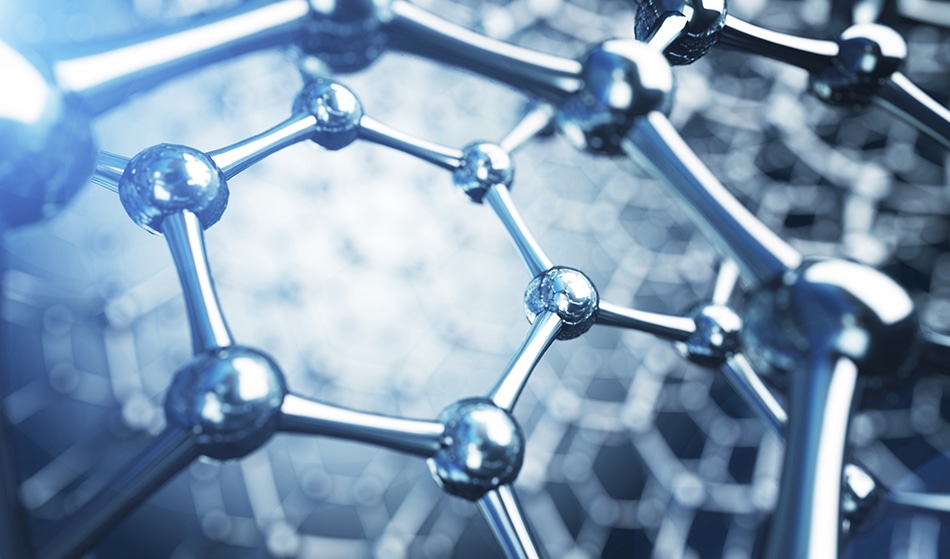 Image credit: Egorov Artem/Shutterstock
Image credit: Egorov Artem/Shutterstock
Materials only a few atoms thick, also called 2D materials, have unique properties that are not found in bulk materials and have applications in energy storage, solar cells, and water purification. One of the most famous examples of such materials is graphene, made of a single layer of carbon atoms. Another type of 2D material, called MXenes, was first synthesized in 2011. Due to their metallic conductivity and hydrophilicity, 2D materials have potential applications as electrodes in rechargeable batteries, gas sensing, and in photothermal cancer therapy.
However, there are only a couple of processes for making them. A new method reported recently in the journal Angewandte Chemie International Edition promises to be much easier and uses cheaper precursors, opening up the range of potential compositions and precursors.
MXenes are transition metal carbides and nitrides where M represents the metal, such as titanium, vanadium, tantalum, niobium, and molybdenum and X is carbon or nitrogen. About 20 different compositions have been made so far with several more on the way. The traditional process of making them involves chemical etching of layered precursors with three elements called MAX compounds, where A represents elements such as aluminum, silicon, germanium, and tin. Acidic etchants containing fluorides remove the A layer, leaving behind MXenes whose surfaces are functionalized with hydroxyl, fluoride, or other groups.
Although potentially a variety of MAX precursors may be used, until now only compounds containing aluminum have been successfully etched to form MXenes. For example, titanium aluminum carbide (Ti3AlC2) is the only precursor used for the synthesis of titanium carbide (Ti3C2). But, this precursor is expensive and has a limited supply.
Another option is using the silicon version, Ti3SiC2, which is more commonly available and is cheaper. However, previous attempts to remove Si using fluoride-based etchants did not work as they failed to break the strong silicon bonds to the transition metal. Now, a team of researchers at Drexel University in Philadelphia, where the first MXenes were synthesized, has found a way around the problem.
They used the knowledge that silicon can be etched when oxidants such as nitric acid, hydrogen peroxide, and permanganate salts are mixed with hydrofluoric acid. Previous research has shown nitric acid when mixed with hydrogen fluoride can etch silicon carbide by helping break the silicon-carbon bond.
In the new study, researchers immersed Ti3SiC2 into a solution of hydrofluoric acid and hydrogen peroxide. The hydrogen peroxide slowly etched away from the silicon layer, and after about two days, only layers of titanium carbide were left, which delaminated to form purple-black flakes approximately 1 nanometer thick.
Scanning electron microscopy (SEM) images of Ti3SiC2 show closely packed layers, which upon exposure to the etchant-oxidant mixture became looser and more open, confirming the etching away of silicon. Chemical analysis using energy dispersive X-ray spectroscopy (EDX) and showed very little silicon in the flakes, again proving that it was etched away. Structural analysis showed that titanium carbide produced using a silicon-based precursor has the same structure as that produced using an aluminum-based precursor.
Other oxidants could also be potentially used. The team showed initial results using nitric acid, although it was difficult to control the etch rate and often led to over-etching. In addition, they also confirmed potassium permanganate and ammonium persulfate could also etch away silicon. However, they write that all these results are only preliminary and further optimization of materials and conditions is needed to pave the way for future production using this method.
This could then open up possibilities of using silicon-based starting materials for creating new MXenes and other 2D materials that could not be made previously as well as making the fabrication process easier.
Disclaimer: The views expressed here are those of the author expressed in their private capacity and do not necessarily represent the views of AZoM.com Limited T/A AZoNetwork the owner and operator of this website. This disclaimer forms part of the Terms and conditions of use of this website.